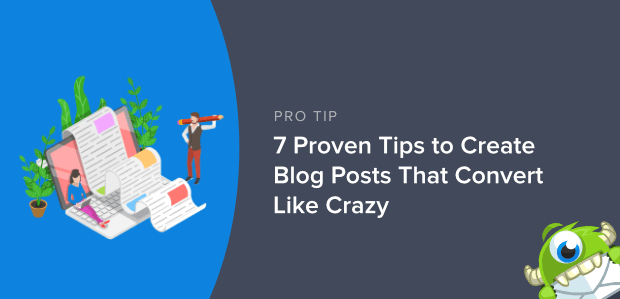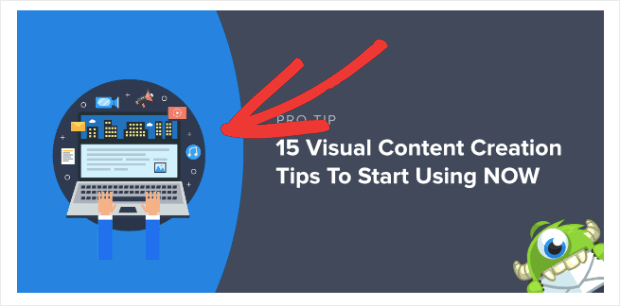How to write best blogs on steemit and Earn $500 daily
Conversion Rate Optimization Blog

Practical tips to boost your site conversions.
Create Blog Posts That Convert Like Crazy Featured Image
7 Proven Tips to Create Blog Posts That Convert Like Crazy
by Mani Gupta on July 28, 2020
ShareTweetSharePinSHARES2.6K
Are your blog posts not converting as well as you’d like them to? Want to know the secrets of how to write a blog post that converts? In this article, we’ll share 7 tips that will help you write a blog post that converts.
You see, most people that visit your blog post usually leave without reading it all the way through.
And the worst part is that an even larger percentage of people who see your blog post whichever social media platforms you use never even click on it.
You really only have 2–3 seconds to grab your user’s attention, convince them to click, and actually read your blog post.
So how do you make sure that your content marketing efforts aren’t going to waste? Well, you follow these 7 tips, and we promise it’ll help you write blog posts that convert.
Note: If you are totally brand new to all this and don’t even have a blog yet, no worries. Here’s a killer article that will help get your blog started in 7 easy steps.
- Know Your Audience

know your audience
Before you start writing, it’s crucial that you know who your audience is, and what they are looking for.
Instead of guessing what your audience needs or wants, try to make data-driven decisions by doing industry research and competitor analysis.
Sounds complicated? It really isn’t.
There are tons of resources out there that you can use to make life easier. Below are some of our favorites:
KeywordTool.io: This is a free tool that you can use to see what are some of the most popular keywords searched by users in your industry.
Twitter Advanced Search: Simply type your keyword and select the filter “questions” and it will show you all the questions that folks in your industry are asking.
Quora: A great resource to find questions folks in your industry are asking.
SEMRush: Although it’s a paid tool, it works extremely well and allows you to spy on your competitors and steal their best ideas.
And in case you’re running out of blog post ideas, we’ve created a list of 103 blog post ideas as well as 73 types of blog posts that are proven to work.
- Write Compelling Headlines

Compelling Headlines
If you don’t have a compelling headline, then there’s a very good chance that your blog post will not be read or shared.
As humans, we’re shallow. We judge a book by its cover and a blog post by its title.
That’s why your blog post title is crucial for the success of that article.
We recommend that you run your headline through EMV headline analyzer to find the emotional marketing value of your headline.
You can also use IsItWP’s headline analyzer tool which also gives tips on how to improve your headline.
Or, you may be interested in trying out OptinMonster’s new headline analyzer tool. This free analyzer will make sure you’re writing the most clickable and SEO-friendly headlines that bring in more traffic.
Related Content: 13 Best Blog Sites In 2020: Which Is Right For You?
- Add Subheadings and Shorter Paragraphs to Break up the Page

Subheading and Formatting
Formatting is super important for blog posts. There’s nothing worse than reading a blog post that’s just one giant paragraph.
Most of the time people skim through the content before they actually decide to read it, so we always recommend breaking up your article with subheadings.
Anything you can do to make it easy on the user’s eyes is going to help them read your blog post (and take the action that you want them to).
Another quick tip is to use shorter paragraphs to help your readers work their way through your post.
At OptinMonster, you may have noticed that we tend to break up each paragraph every few lines or so. Here’s an example from one of our posts on eCommerce optimization:
Example from OptinMonster blog post to show we don't use blocks of text
Notice how small the blocks of text are. Usually, we stick to 2–3 lines of text, maybe 4 if something really needs explanation.
We do this to help our readers absorb all the information coming their way in as short amount of time as possible.
Remember, not all kinds of content are created equal. Sometimes you want to read a book, so a lot of block text is fine. But blog posts are different. They’re designed to give highly focused, quality information in a short amount of time.
In other words, we know our audience isn’t sitting down to read War and Peace. They want to know how to drive traffic, convert leads, and increase their revenue.
And they want all that information yesterday.
So, organize your ideas through subheadings and keep your paragraphs short to help your reader absorb more information in less time.
Sometimes you can even go a step further than short paragraphs, which brings us to our next tip…
- Use Bullet Points
People tend to skim blog posts before they decide to read it. That means you need to make sure to highlight your best information. That way, they can quickly see that your post is worth their time.
Aside from subheadings, bullet lists are perfect because they’re very easy to skim through.
Here are some tips that we use to write bullet points that people will actually read:
Express clear benefits. Think of bullets as mini-headlines.
Keep your bullets symmetrical. 1-2 lines each.
Avoid bullet clutter. Don’t write paragraphs in bullets.
Remember bullets are not sentences. They’re just like headlines.
Again, people don’t come to blog posts for leisurely beach reading. They want specific information and don’t want to work to get it.
Bullet points are an excellent way to spoon-feed your audience in a way that keeps them coming back for more.
- Add Images

Brain with Colors
The human brain processes visual content a lot faster than text-based content. That’s why adding captivating images can help boost your engagement.
There are tons of awesome free resources for finding high-quality royalty-free images.
But honestly, you’d probably be better off taking your own photos or creating your own images. Stock photos are great when you’re in a pinch (and we definitely use them from time to time!), but they aren’t super personal.
For OptinMonster, we also use Shutterstock, a premium stock photo site. This allows us to create custom images for our post’s featured image:

Example of a featured image
Or to create interesting images to break up the text in our article (like the image under our next tip, for example ?).
- Optimize for SEO

Onpage SEO
In the blogging world, SEO can be tricky. On the one hand, you should never put SEO over your user’s experience (UX). On the other hand, you shouldn’t ignore SEO, either.
The goal is to find the balance.
The truth is that organic searches on Google drives a huge chunk of the traffic for most websites. OptinMonster included.
If you want to maximize your SEO ranking, then we highly recommend that you optimize your blog post for important SEO ranking factors.
Below are some of the tips that we follow:
Add a proper meta title
Add a proper meta description
Optimize for focused keywords
Use related keyword variation
Add alt-text to your images
Embed internal links to your other content
For more details, you should check out this 14-point blog post checklist to use before you hit publish.
- Add a Clear Call-to-Action
In the spirit of saving the best for last, here’s our last tip for writing a blog post that converts: add a clear call-to-action.
Whether it’s to ask your readers to leave a comment, share your blog post, follow you on social media, or purchase your product, make sure you clearly state what you’d like them to do.
A good call-to-action is something that’s easily distinguishable and stands out.
Usually, for your blog posts, the call to action will ask readers to share their content if they liked what they read.
If you follow OptinMonster’s blog, you’ve probably noticed that’s how we finish most articles. The call to action looks something like this:
Example of the end of an optinmonster blog post
If your content is stellar, most readers will be thrilled to share. And if your product is awesome, most people will be happy to buy it.
But in order to get them to do either, you need to ask!
Capturing Even More Leads
If you follow the 7 tips listed above, we’re positive you’ll see way more conversions than you have before. But here’s the thing:
More doesn’t always mean most.
And if you’re looking to get the most conversions, you may want to consider investing in conversion optimization software.
Now, to be fair, this is OptinMonster’s specialty. Which means we’re kind of biased.
We think that the key to getting conversions is to create targeted campaigns designed to capture your reader’s attention and grow your email list. From there, you can nurture your leads and build a loyal base of lifelong customers.
The truth of the matter is that converting readers with a blog post is like trying to fix a broken pipe with duct tape. You can definitely do it. And it can definitely work.
But it isn’t the best tool for the job, and you’re bound to see some leads slip through the cracks.
So whether you decide to go with OptinMonster or another conversion optimization tool of your choice, we 100% recommend you pull out all the stops to maximize your conversions.
Do you have any tricks up your sleeves for using blogs to convert traffic? If so, we’d love to hear about them!
Reach out to us on Facebook or Twitter and let us know what works for you. Or head over to our Youtube channel for other helpful tutorials.